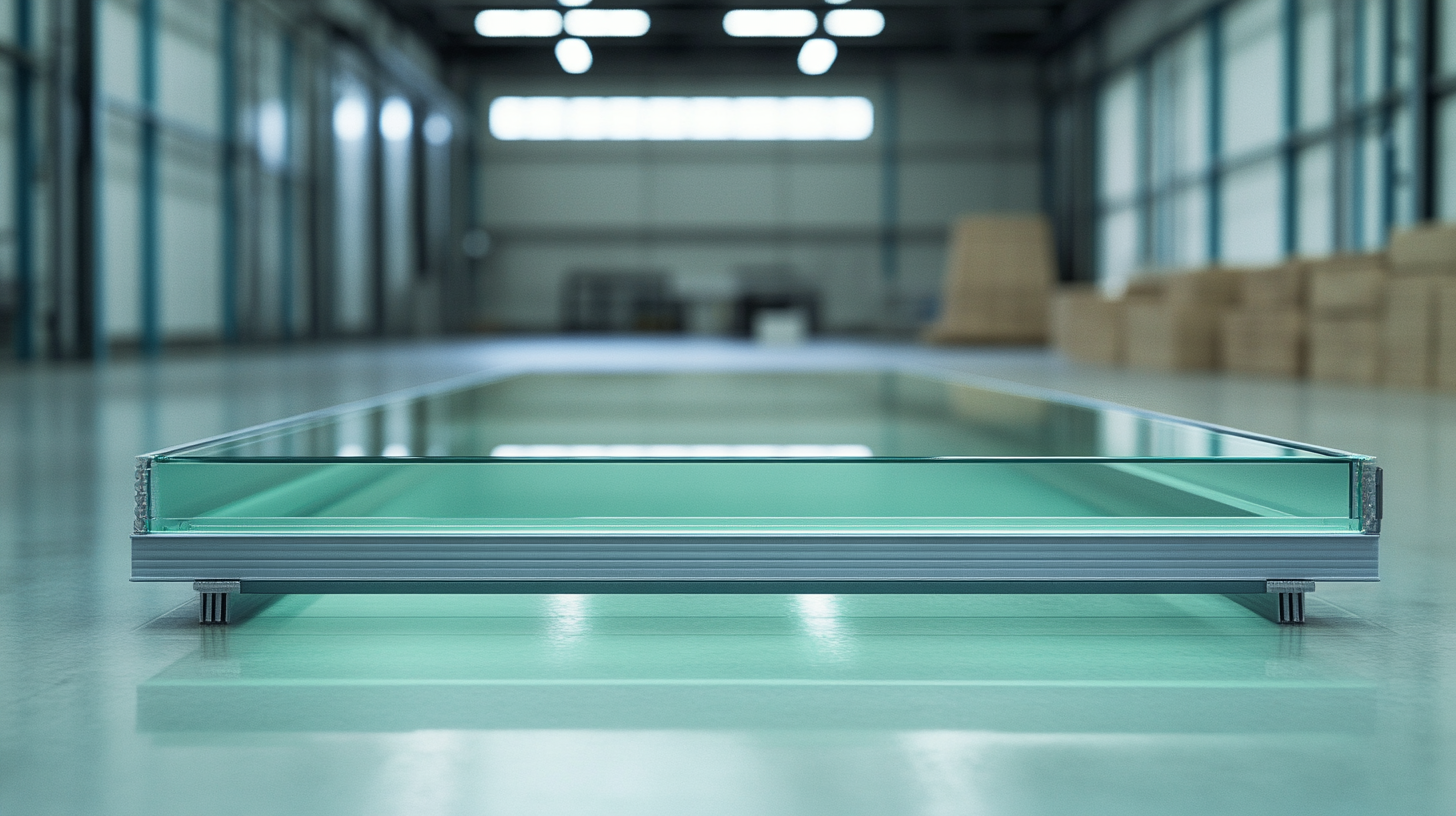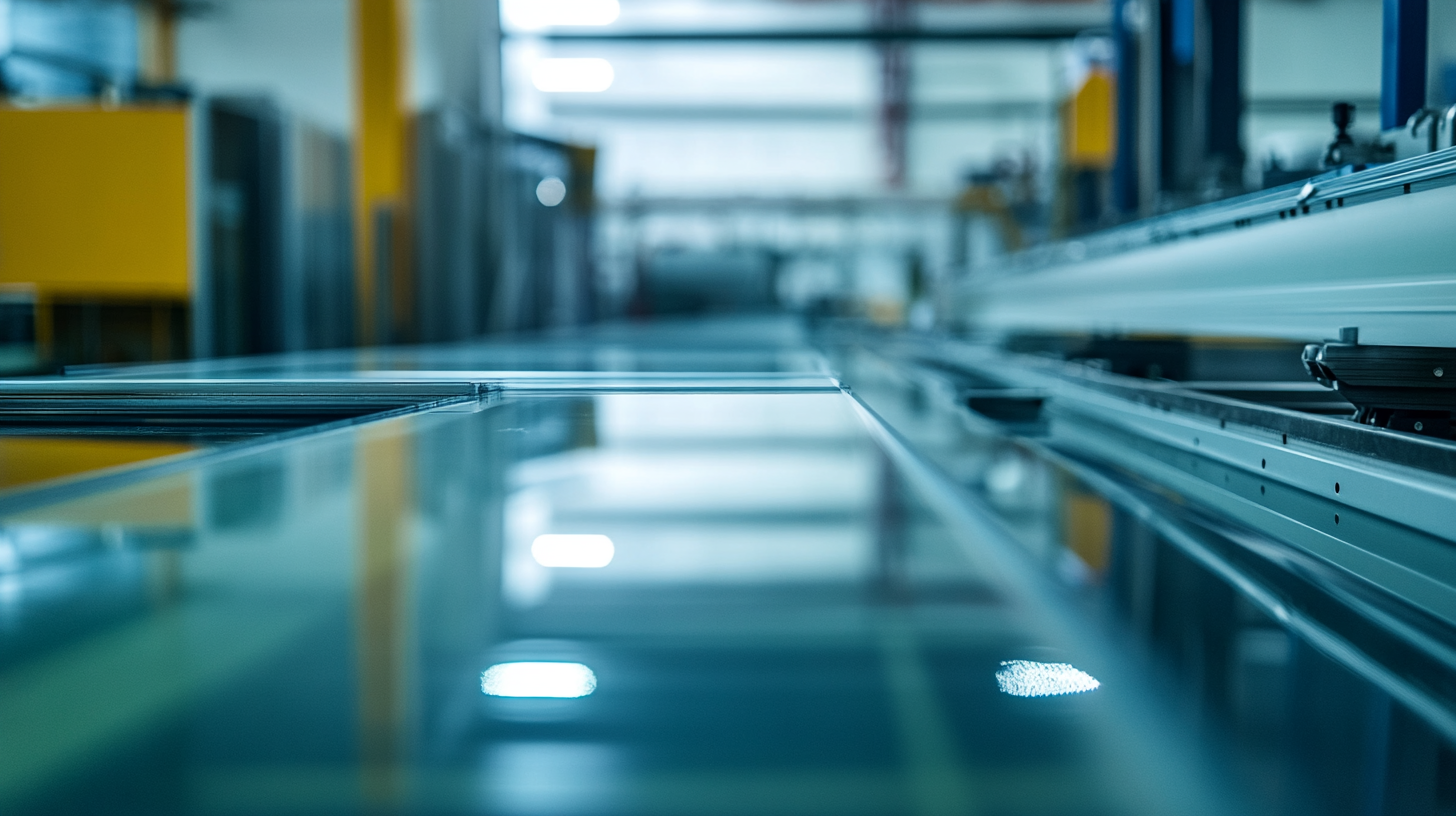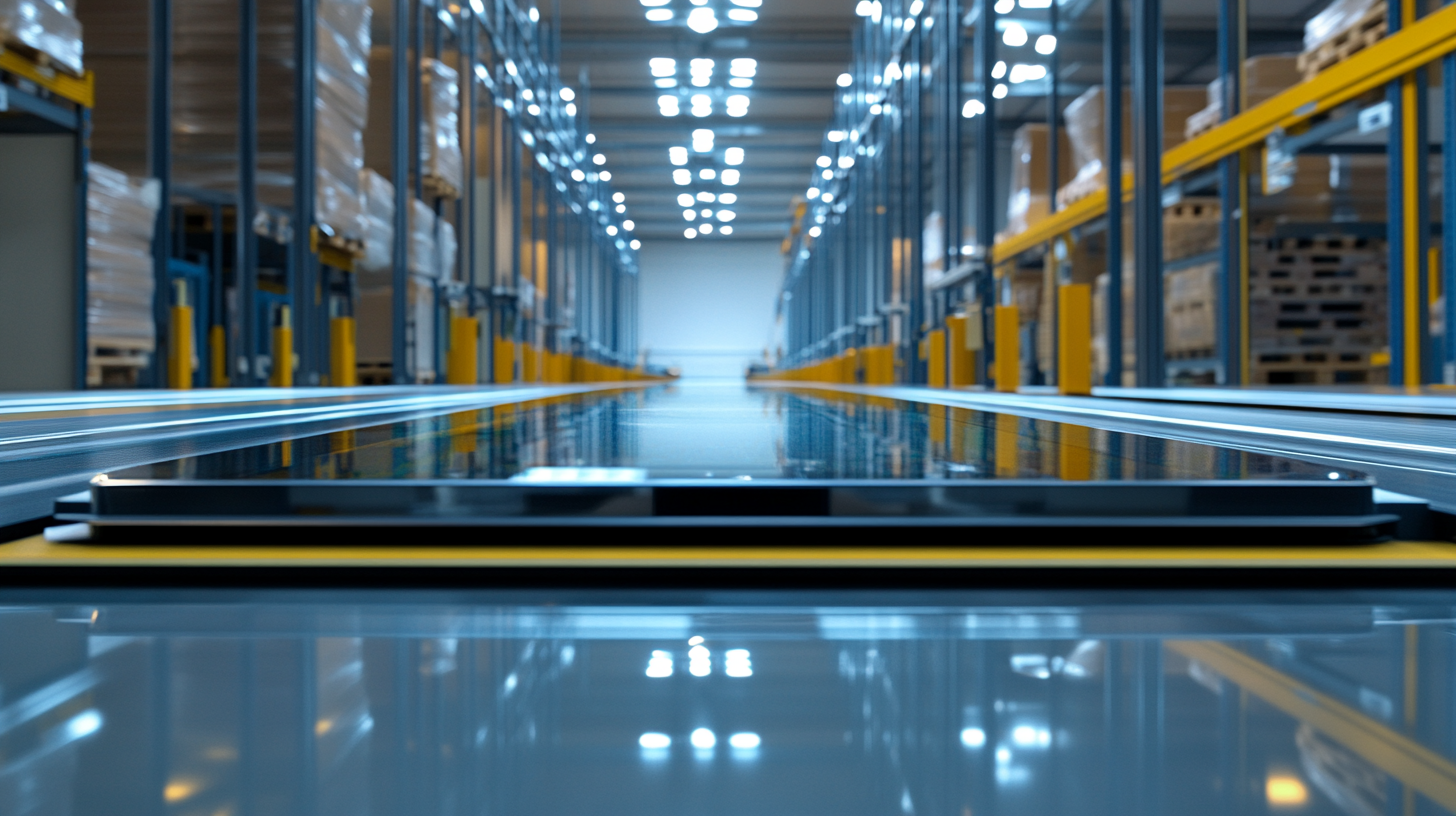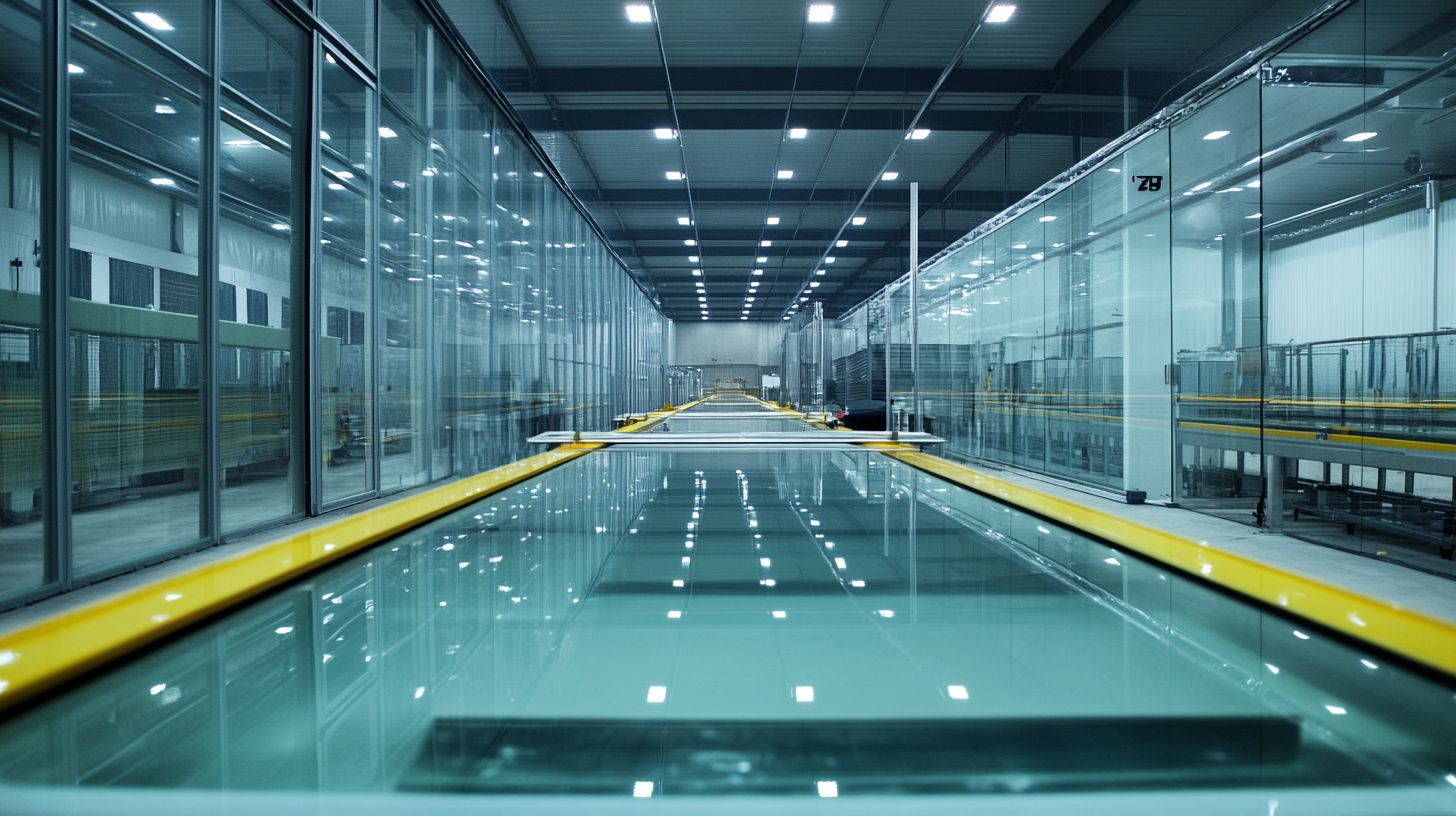8 Essential Innovations in Glass Loading Tables for Global Suppliers
In the rapidly evolving glass manufacturing industry, the importance of efficient handling and processing cannot be overstated. Glass loading tables are critical components in streamlining operations, minimizing wastage, and enhancing productivity. According to a recent report by MarketsandMarkets, the global glass manufacturing market is expected to reach USD 300 billion by 2025, growing at a CAGR of 4.5%. This growth underscores the necessity for innovations in glass loading tables, which are pivotal for achieving operational excellence, reducing labor costs, and enhancing safety standards across production lines.
As global suppliers strive to meet increasing demand and stricter quality standards, the integration of cutting-edge technologies into glass loading tables becomes essential. The introduction of automated loading systems, advanced material handling solutions, and IoT-enabled features are just a few of the advancements shaping the future of glass processing. Furthermore, industry insights from the Glass Association indicate that companies adopting modern glass loading tables can see productivity improvements of up to 25%. This blog will delve into eight essential innovations in glass loading tables that are helping global suppliers to not only meet market demands but also stay ahead of the competition.

The Evolution of Glass Loading Tables: Key Innovations
The evolution of glass loading tables has undergone significant innovations over the years, driven by the needs of global suppliers to enhance efficiency and safety in the manufacturing process. Initially, glass loading tables were simple, static structures that required manual handling, making them labor-intensive and prone to errors. However, recent advancements have transformed these tables into highly sophisticated systems equipped with automation technologies, enabling faster and more precise loading of glass sheets.
One of the key innovations is the incorporation of advanced robotics and automated guided vehicles (AGVs) into glass loading tables. These systems not only minimize human interaction, reducing the risk of injuries, but also improve the speed at which glass is processed. Automated systems can now handle various sizes and weights of glass, drastically reducing setup times and allowing for seamless transitions between different production runs. Additionally, the integration of smart sensors and real-time data analytics ensures optimal loading sequences, which helps in mitigating waste and enhancing overall efficiency.
Another important development in glass loading tables is the enhancement in design for ergonomics and handling. Modern tables come equipped with adjustable heights and customizable layouts, providing better accessibility for operators. This evolution signifies a move towards creating a safer work environment while also addressing the diverse requirements of different manufacturers. As the industry continues to innovate, these improvements not only promise to boost productivity but also to pave the way for more sustainable practices in glass handling and processing operations.

Automation Features That Enhance Efficiency in Glass Handling
In the fast-evolving world of glass handling, automation technology plays a pivotal role in enhancing efficiency and productivity. The recent advances in glass loading tables focus on integrating automation features that streamline the process, significantly benefiting global suppliers. Innovations such as automated quality control systems have emerged as essential upgrades, ensuring that precision and high-quality standards are consistently met throughout the manufacturing process. By automating quality checks, suppliers can reduce human error, improve accuracy, and ultimately enhance product safety.
Moreover, new robotic solutions are being adopted across industries to optimize logistics and operational workflows. For instance, similar to advancements in sectors like beverage production and home automation, the glass industry is increasingly implementing technologies that allow for more agile and efficient operations. Fully automated warehouses are becoming the norm, as seen in recent installations where entire logistics are handled by intelligent systems. This shift not only maximizes space utilization but also ensures that glass products are loaded, transported, and stored with minimal human intervention, drastically reducing processing times.
As the glass sector continues to embrace these innovative automation features, it is poised for significant growth and transformation. The integration of smart technologies not only enhances efficiency in glass handling but also positions suppliers to meet the rising demands of the market effectively.

Enhanced Safety Mechanisms in Modern Glass Loading Tables
The evolution of glass loading tables has seen significant advancements, particularly in safety mechanisms designed to protect workers and materials alike. Modern glass loading tables now incorporate features that streamline operations while prioritizing safety, reflecting a growing commitment within the industry to enhance worker well-being. Enhanced safety systems such as automatic locking mechanisms and proximity sensors help to reduce the risk of accidents, ensuring that glass panels are handled safely at all times.
Furthermore, the integration of advanced materials and design methods plays a crucial role in the improvement of these loading tables. Recent studies have emphasized the importance of sustainability in the materials used, with innovations that not only bolster the structural integrity of the tables but also contribute to environmental responsibility. As manufacturers increasingly focus on eco-friendly materials, the durability and efficiency of glass loading operations can be significantly improved, leading to a safer working environment.
In addition, the preparation for potential hazards like fire is becoming standard practice. Research on structural glass systems under fire loading showcases the need for better design strategies that can withstand extreme conditions. By integrating these comprehensive safety mechanisms, modern glass loading tables not only ensure the protection of personnel but also promote a safer and more reliable framework for the handling and transportation of glass products in the global market.

Sustainability Trends: Eco-Friendly Materials in Glass Loading Solutions
As the glass manufacturing industry evolves, sustainability has become a pivotal focus for global suppliers, particularly in glass loading solutions. Recent studies indicate that approximately 80% of manufacturers prioritize eco-friendly practices, seeking innovations that minimize environmental impact. The use of sustainable materials in glass loading tables not only meets regulatory requirements but also caters to a growing customer preference for green products.
One major trend is the integration of recycled materials into the production of glass loading tables. Reports from the Glass Industry Sustainability Council reveal that using recycled glass in manufacturing reduces energy consumption by as much as 30%. This approach not only lowers operational costs but also significantly decreases the carbon footprint of manufacturing processes. Additionally, advancements in production technology have enabled suppliers to create durable and efficient glass loading tables using these eco-friendly materials, enhancing their appeal in a competitive market.
Furthermore, innovative designs incorporating modular components are gaining traction, allowing for easier upgrades and maintenance while reducing waste. The European Commission's Circular Economy Action Plan highlights the importance of such innovations, suggesting that modularity can extend the lifecycle of industrial equipment, thereby promoting sustainability. As the industry moves forward, suppliers who adapt to these sustainability trends and invest in eco-friendly innovations will undoubtedly gain a competitive edge in the global market.
Integrating Smart Technology for Improved Performance and Monitoring
The integration of smart technology into glass loading tables has revolutionized the way global suppliers manage and optimize their glass handling processes. As per a recent report by Research and Markets, the smart factory market is expected to reach $500 billion by 2025, with automated systems playing a vital role in enhancing operational efficiency and reducing resource waste. Smart technology enables real-time monitoring of glass sheets during loading and unloading, ensuring that errors are minimized and productivity is maximized.
One significant innovation is the implementation of IoT (Internet of Things) devices that collect and analyze data in real-time. These devices provide valuable insights into the performance of glass loading tables, allowing suppliers to predict maintenance needs and avoid costly downtime. A case study by McKinsey indicates that companies leveraging IoT solutions see productivity increases of around 20-30%. With automated tracking and monitoring features, manufacturers benefit from streamlined workflows and improved quality control.
Moreover, the introduction of advanced AI algorithms enhances the functionality of glass loading tables by optimizing loading patterns and enhancing safety measures. According to a report published by PwC, 72% of manufacturers anticipate that AI will significantly improve their operational processes within the next decade. By utilizing smart technology, global suppliers can adapt to market demands more agilely, ensuring that they stay competitive in an increasingly automated industrial landscape.

Home
About Us
Products
UPVC PVC Window Machine
Aluminum Window Machine
Glass Cutting Machine
Glass Edging Machine
Insulating Glass Machine
Glass lifting machine
Glass Washing Machine
Glass Laminating Machine
Glass Sandblasting Machine
Glass Drilling Machine
CNC Glass Working Center
CNC Non-Metal Cutting Machine
The Other Glass Machinery
Application
Download
News
Contact Us




